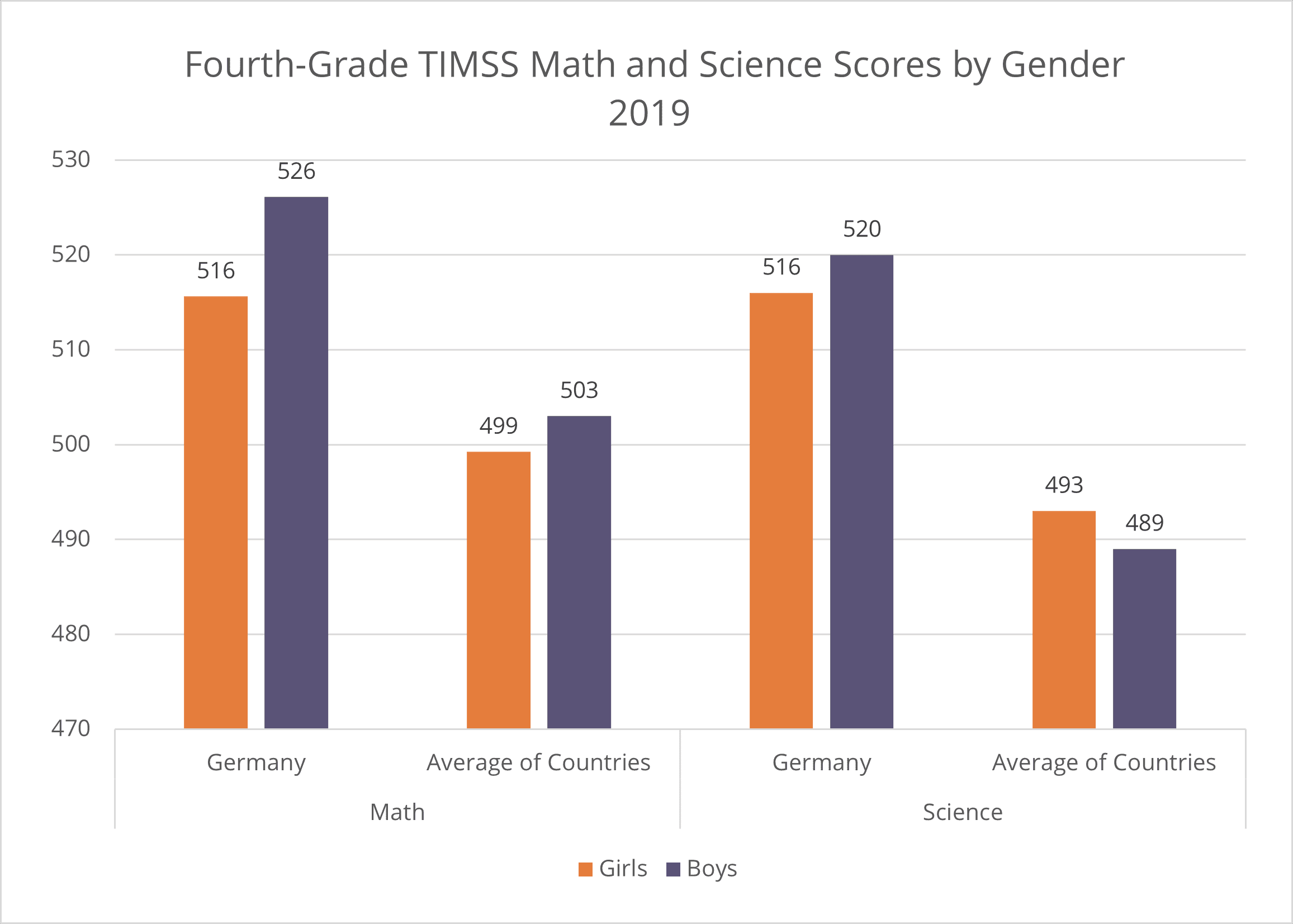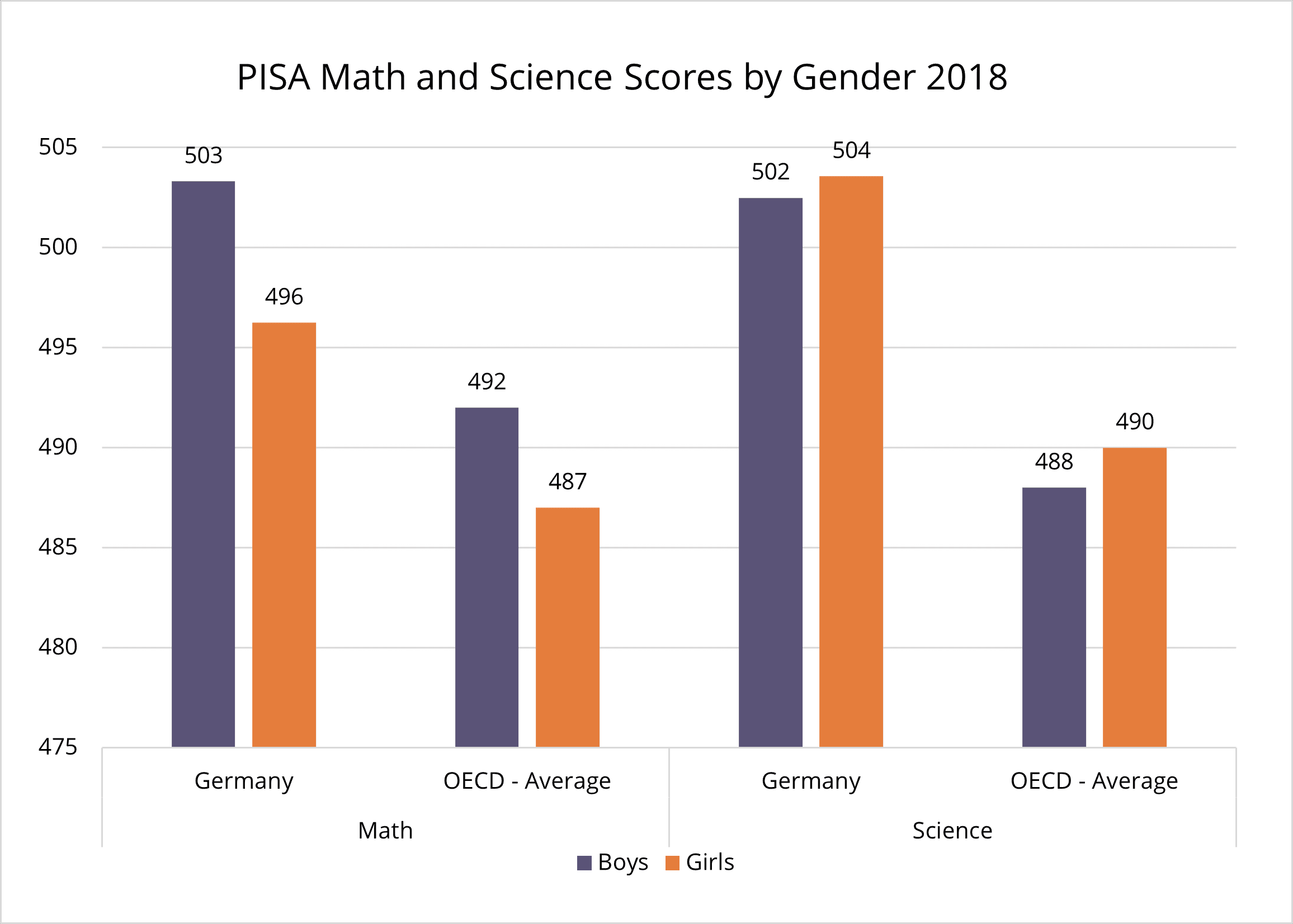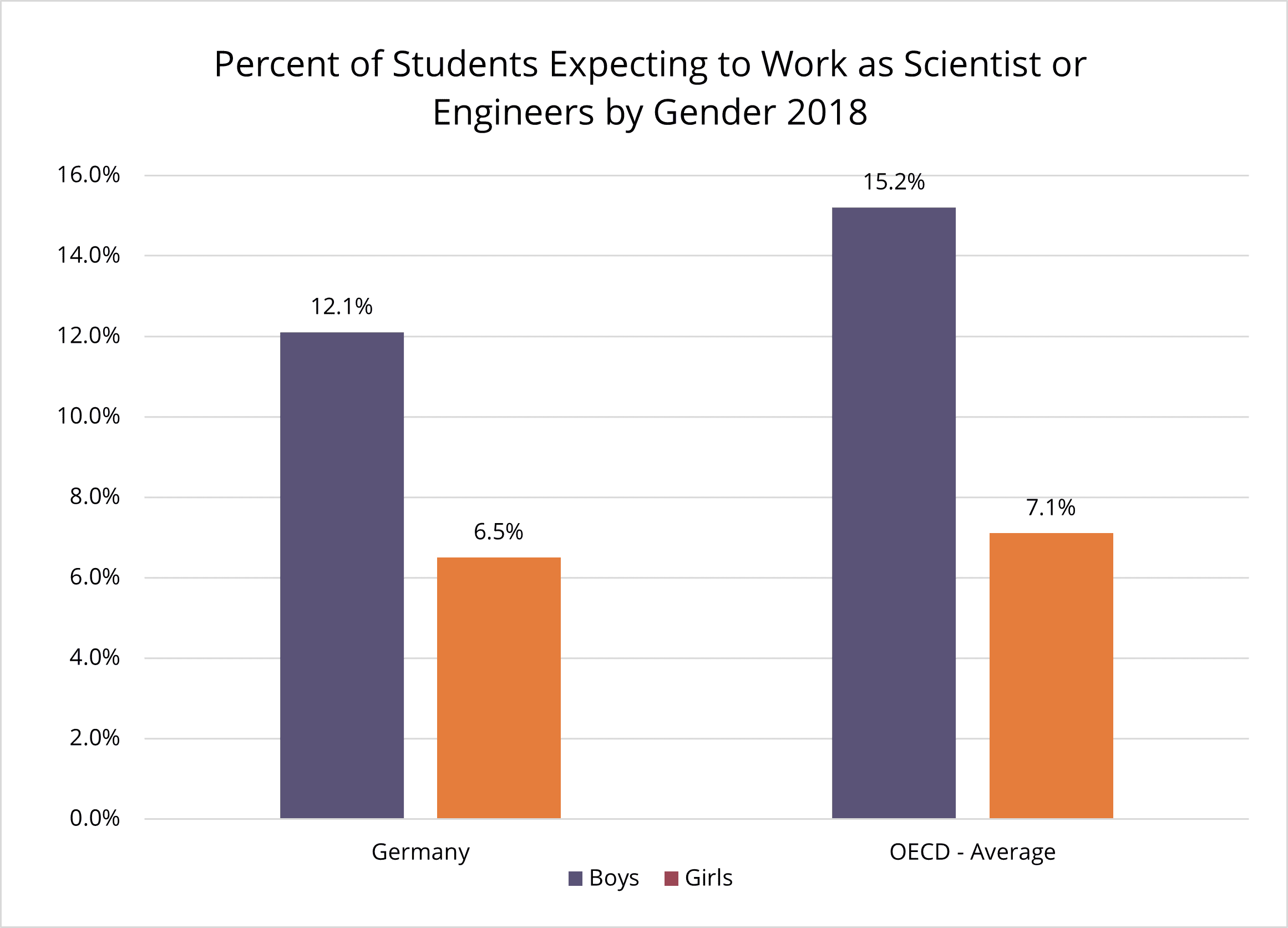Understanding students’ academic preparation in math and science is critical to ensuring success in STEM subjects. Scores from two international examinations, the Trends in International Mathematics and Science Study (TIMSS) and the Programme for International Student Assessment (PISA), allow analysis of the performance of boys and girls across various grades in the German educational system. The TIMSS is a global examination that measures and compares students’ math and science achievement across countries. The test assesses students’ knowledge and understanding of topics in the two subjects and their problem-solving and critical-thinking abilities. According to 2019 data from the National Center for Education Statistics (2021), fourth-grade German boys scored 526 on the TIMSS math section, while their female counterparts scored 516. Fourth-grade boys and girls received average science scores of 520 and 516, respectively.

The PISA assessment results are used to understand high school math and science readiness. PISA is an international evaluation that evaluates the knowledge and skills of 15-year-old students from various countries. In the PISA mathematics section, boys scored 503, slightly higher than girls, who earned 496. In science, however, girls had a slight advantage, scoring 504 points to boys’ 502 points.

PISA describes students’ job aspirations in addition to academic accomplishment. Notably, 12.1% of boys aspired to become science and engineering professionals, compared to 6.5% of girls. The findings indicate that more boys are considering professions in science and engineering, prompting us to consider how we may inspire and encourage more girls to pursue STEM pathways.

By analyzing the performances of boys and girls in TIMSS and PISA assessments, we gain valuable insights into their strengths and areas needing attention. Furthermore, as highlighted by the PISA results, the differences in career aspirations between male and female students underscore the importance of fostering a more inclusive and diverse environment within STEM education, encouraging and empowering girls to confidently stride along STEM trajectories.
Additional Resources
OECD (2019), PISA 2018 Results (Volume I): What Students Know and Can Do, PISA, OECD Publishing, Paris.
National Center for Education Statistics (2021). TIMSS 2019 Report. U.S. Department of Education.